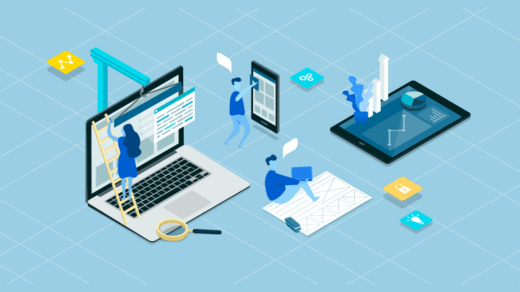“Blockchain and Software: A New Era of Security and Trust” explores the intersection of blockchain technology and software development. This fusion promises enhanced security, transparency, and trust in various applications. Here are 15 key points related to the integration of blockchain and software, along with their respective pros and cons:
Blockchain and Software Integration:
- Decentralized Ledger: Blockchain provides a decentralized ledger that records transactions and data.
- Pros: Enhanced security, immutability, and transparency.
- Cons: Scalability issues, resource-intensive.
- Cryptographic Security: Blockchain uses cryptographic techniques to secure data and transactions.
- Pros: Robust security, protection against data tampering, and trust.
- Cons: Key management complexity, potential for lost access.
- Smart Contracts: Smart contracts are self-executing contracts with predefined rules.
- Pros: Automation, reduced intermediaries, and trust in contract execution.
- Cons: Complex coding, potential vulnerabilities.
- Supply Chain Tracking: Blockchain can be used to track the provenance of goods in supply chains.
- Pros: Improved transparency, reduced fraud, and traceability.
- Cons: Data entry challenges, adoption hurdles.
- Digital Identity: Blockchain can enhance digital identity verification.
- Pros: Reduced identity theft, privacy, and secure authentication.
- Cons: Scalability for identity verification, regulatory challenges.
- Tokenization: Assets can be tokenized on the blockchain, making them more liquid and transferable.
- Pros: Improved liquidity, accessibility to global markets, and fractional ownership.
- Cons: Regulatory compliance, fraud risk.
- Immutable Records: Once data is recorded on the blockchain, it is nearly impossible to alter.
- Pros: Data integrity, trust, and auditability.
- Cons: Data privacy concerns, potential data permanence issues.
- Reduced Intermediaries: Blockchain eliminates intermediaries in various processes.
- Pros: Cost savings, faster transactions, and trust in direct interactions.
- Cons: Legal and regulatory issues, resistance from intermediaries.
- Transparent Voting: Blockchain can facilitate transparent and tamper-proof voting systems.
- Pros: Electoral integrity, reduced fraud, and increased voter trust.
- Cons: Identity verification challenges, privacy concerns.
- Secure Digital Content: Blockchain secures digital content against piracy and unauthorized access.
- Pros: Intellectual property protection, trust, and content monetization.
- Cons: User adoption, content access complexities.
- Immutable History: Blockchain maintains an immutable history of data changes.
- Pros: Enhanced auditing, accountability, and transparency.
- Cons: Data storage challenges, privacy concerns.
- Cross-Border Payments: Blockchain enables faster and more cost-effective cross-border payments.
- Pros: Reduced fees, faster settlements, and financial inclusion.
- Cons: Regulatory compliance, volatility.
- Distributed Applications (dApps): dApps run on blockchain, offering decentralized and secure services.
- Pros: Improved security, data control, and trust in app functionality.
- Cons: Development complexity, user adoption challenges.
- Tamper-Proof Supply Chains: Blockchain ensures the authenticity of products in supply chains.
- Pros: Reduced counterfeiting, traceability, and trust.
- Cons: Data entry challenges, resistance from stakeholders.
- Digital Notarization: Blockchain-based notarization provides digital proof of document authenticity.
- Pros: Secure document verification, trust, and reduced fraud.
- Cons: Legal recognition, adoption hurdles.
Pros and Cons of Blockchain and Software Integration:
Pros:
- Enhanced Security: Blockchain provides robust cryptographic security.
- Immutability: Data recorded on the blockchain is tamper-proof.
- Transparency: Blockchain offers transparency and auditability.
- Reduced Intermediaries: Eliminating intermediaries leads to cost savings.
- Trust: Blockchain fosters trust in data and transactions.
- Automation: Smart contracts automate processes and reduce manual intervention.
- Traceability: Blockchain enables the traceability of products in supply chains.
- Privacy: Blockchain can enhance digital identity and data privacy.
- Tokenization: Assets become more liquid and accessible through tokenization.
- Electoral Integrity: Transparent voting systems reduce electoral fraud.
- Intellectual Property Protection: Blockchain secures digital content against piracy.
- Cross-Border Payments: Faster, cost-effective cross-border payments.
- Accountability: Blockchain provides a clear history of data changes.
- Secure dApps: dApps offer secure, decentralized services.
- Authentication: Blockchain facilitates secure authentication and authorization.
Cons:
- Scalability Issues: Blockchain faces challenges in handling a high volume of transactions.
- Resource-Intensive: Blockchain requires significant computational resources.
- Key Management Complexity: Secure key management is essential.
- Complex Coding: Smart contract development can be complex.
- Data Entry Challenges: Accurate data entry is crucial for trust.
- Adoption Hurdles: Adoption can be challenging, particularly in established industries.
- Data Privacy Concerns: Blockchain’s transparency may raise privacy issues.
- Regulatory Challenges: Compliance with existing regulations can be complex.
- Potential for Lost Access: Key loss can result in permanent data loss.
- Potential Vulnerabilities: Smart contracts may contain security vulnerabilities.
- Adoption Hurdles: Adoption can be challenging in traditional systems.
- Legal and Regulatory Issues: Eliminating intermediaries may face legal challenges.
- Privacy Concerns: Transparent voting may raise privacy concerns.
- User Adoption Challenges: dApps may struggle to gain user adoption.
- Resistance from Stakeholders: Stakeholders may resist tamper-proof supply chain solutions.
The integration of blockchain and software holds promise for enhancing security and trust in various applications. While challenges and adoption hurdles exist, the advantages of security, transparency, and trust make it a compelling technology for software development.
